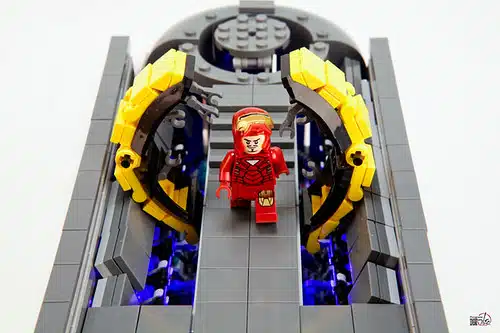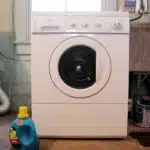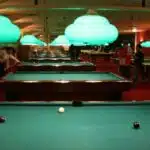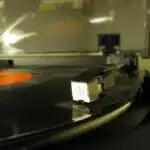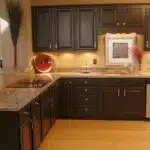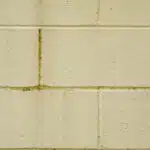Wrought iron has been a popular material for outdoor furniture, railings, and gates for centuries due to its strength and durability. However, over time it can become dull and rusted, diminishing its aesthetic appeal. Painting wrought iron is an effective way to restore its beauty and preserve its longevity. In this article, we will explore the steps required to paint wrought iron like a professional.
Painting wrought iron requires careful preparation and attention to detail. A successful paint job not only enhances the appearance of the material but also protects it from harsh weather conditions. As a wrought iron painting expert with years of experience, I have observed that proper surface preparation is critical in achieving a long-lasting finish. By following the guidelines provided in this article, you will learn how to prepare your wrought iron surface for painting, choose the right type of paint and tools, and apply a smooth coat of paint that will stand up against wear and tear over time.
Understanding The Characteristics Of Wrought Iron
Wrought iron has been a popular material for outdoor furniture, fences, and gates for centuries. It is known for its durability, strength, and unique aesthetic qualities. Understanding the characteristics of wrought iron is crucial before painting it because it can affect the longevity of the paint job.
Analyzing durability is an essential aspect of understanding wrought iron’s characteristics. Due to its high carbon content, wrought iron has excellent tensile strength and can withstand immense pressure without breaking or bending. When painted correctly, wrought iron can last for years without fading or peeling. However, if not maintained properly, it can rust rapidly and lose its structural integrity.
Understanding corrosion is another crucial characteristic of wrought iron. Corrosion occurs when metal reacts with oxygen and moisture from the air, causing it to rust over time. Wrought iron is susceptible to corrosion due to its high carbon content. It’s essential to evaluate your wrought iron surface thoroughly before painting it to ensure there are no signs of corrosion or rust that could affect the paint’s adhesion.
Evaluating Your Wrought Iron Surface
As we learned in the previous section, wrought iron has unique characteristics that make it a popular choice for outdoor furniture and decor. However, before you start painting your wrought iron surface, it’s important to assess its condition carefully. Identifying any imperfections or damage will help you determine the best course of action.
Assessment techniques for wrought iron surfaces vary depending on their intended use and location. For example, if your wrought iron is used outdoors and exposed to harsh weather conditions, you may need to look for signs of rust or corrosion. You can also inspect the surface for any chipping or peeling paint, which can affect the quality of your finished product. By taking these steps, you’ll be able to identify any potential issues before you begin painting.
In addition to assessing your wrought iron surface for imperfections, it’s essential to clean it properly before painting. This step will ensure that your paint adheres well and lasts as long as possible. There are several methods available for cleaning wrought iron surfaces effectively, including pressure washing or scrubbing with a wire brush. Make sure to choose the appropriate cleaning method based on your specific needs and avoid damaging the surface further.
- Here are three key factors to consider when evaluating your wrought iron surface:
- The type of finish: Different types of finishes require different preparation methods.
- The level of damage: Assessing any rust or corrosion will help determine how much work needs to be done before painting.
- The location: Wrought iron surfaces exposed to direct sunlight or harsh weather conditions may require more maintenance than indoor surfaces.
Next up is cleaning your wrought iron surface; this step is critical in ensuring a successful paint job. By removing dirt and debris from the surface beforehand, you’ll have an easier time applying paint evenly and smoothly.
Cleaning Your Wrought Iron Surface
Pre painting preparation is essential to achieve an even coating on your wrought iron surface. Before you start painting, ensure that the surface is free from rust, dirt, flaking paint, and any other contaminants that may affect the quality of your work. A clean surface will allow the paint to adhere better and last longer.
Choosing cleaning solutions for your wrought iron surface can be daunting since there are various options in the market. However, it is crucial to select a solution that is safe for both you and your environment while effectively cleaning the surface. Some popular cleaning solutions for wrought iron surfaces include mild soap and water, vinegar and baking soda paste, or commercial metal cleaners.
Once you have selected a suitable cleaning solution for your wrought iron surface, apply it thoroughly using a soft-bristled brush or cloth. Start by scrubbing away any visible dirt or grime from the surface before proceeding with deeper cleaning if necessary. Rinse off the cleaning solution with clean water and dry the surface completely before moving onto removing rust and flaking paint.
Removing Rust And Flaking Paint
After cleaning your wrought iron surface, removing rust and flaking paint is the next step towards painting it. Rust can cause a significant amount of damage to your wrought iron if left unchecked. It not only ruins its aesthetic, but it also weakens the structure of your ironwork. To prevent future rust, you need to remove all traces of it before painting your wrought iron.
The best rust removal products for wrought iron are those that contain phosphoric acid, such as naval jelly. Phosphoric acid converts rust into a stable compound that can be washed away easily. You could also use sandblasting or power tool cleaning to remove large areas of rust from your wrought iron surface. Sandblasting is ideal for larger surfaces while power tool cleaning is best suited for smaller areas.
After removing all visible signs of rust from your wrought iron surface, you should then focus on sanding it down. Sanding helps in creating an even surface which makes it easier for primer and paint to adhere to the surface properly. While sanding, ensure that you wear safety goggles and a dust mask to protect yourself from inhaling any particles released during the process. In the next section, we will look at how to sand your wrought iron surface properly without causing any damage to it.
Sanding Your Wrought Iron Surface
To achieve a smooth and even finish when painting wrought iron, it’s vital to properly prepare the surface by sanding it. Sanding helps remove any rust, old paint, or dirt that may be present on the surface. However, before you begin sanding your wrought iron surface, make sure you have all the necessary tools such as safety glasses, gloves, and a dust mask for protection.
Using the right sandpaper is crucial in achieving a successful outcome. For wrought iron surfaces, use 60-80 grit sandpaper for initial rough sanding and then switch to finer grits like 120-150 grit for final smoothing. Proper technique is also essential when sanding your wrought iron surface. Start with light pressure and gradually increase it until you achieve an even texture. Avoid using too much pressure that may cause scratches on the surface.
Protect your surrounding areas by covering them with drop cloths or plastic sheets to prevent any sanding residue from spreading around. Proper disposal of sanding residue is also important in ensuring environmental safety. Be sure to collect all debris in a container and dispose of them appropriately according to local regulations.
If at any point during the process you feel overwhelmed or unsure about what to do next, seek professional help. It’s better to ask for assistance than risk damaging your wrought iron surface or endanger yourself in the process.
Transition into applying a primer coat: Now that your wrought iron surface is well-sanded and clean from any rust or old paint, it’s time to move on to the next step – applying a primer coat.
Applying A Primer Coat
When applying a primer coat to wrought iron, it is important to choose a primer that is specifically designed for metal surfaces. To ensure optimal adhesion of the primer, the wrought iron surface should be thoroughly cleaned and sanded before application of the primer. Once the wrought iron has been adequately prepped, the primer should be applied in thin coats, with a brush, roller, or sprayer. To ensure even coverage, the primer should be applied in the same direction as the grain of the wrought iron. After the primer has been applied, it should be allowed to dry completely before a top coat is applied. The primer should be inspected for any areas that may have been missed, and additional coats may need to be applied before the top coat is applied.
Choosing A Primer
When it comes to painting wrought iron, applying a primer coat is crucial to achieving a long-lasting and professional finish. Choosing the right primer is equally important as it affects the adhesion of the topcoat and the durability of the overall finish. The benefits of using a primer are numerous, including improved resistance to rust, enhanced paint adhesion, and increased durability. However, selecting an appropriate primer can be challenging due to the variety of options available in the market.
One of the common mistakes when priming wrought iron is not cleaning the surface properly before application. It is essential to remove all dirt, rust, grease, and other contaminants from the surface using a wire brush or sandpaper. Failure to do so will lead to poor adhesion and premature peeling of paint. Another mistake is applying too thin or thick coats of primer. A thin coat will not provide enough coverage for proper adhesion while a thick layer may result in drips or runs that require additional sanding and preparation.
To avoid these mistakes and ensure optimal results when painting wrought iron, it’s essential first to select an appropriate primer based on factors such as environmental conditions, topcoat compatibility, and desired finish quality. A high-quality metal-focused primer such as Rust-Oleum Clean Metal Primer is an excellent option for most applications due to its superior adhesion, corrosion resistance, and fast-drying properties. By taking care during this initial step in your painting process you’ll avoid any potential issues down the line making for a successful paint job that will last for years without fail!
Preparing The Wrought Iron
When it comes to painting wrought iron, applying a primer coat is an essential step in achieving a long-lasting and professional finish. However, before priming the surface, proper preparation of the wrought iron is crucial. Surface preparation includes removing rust and other contaminants from the surface using wire brushes or sandpaper. Neglecting this step can lead to poor adhesion and premature peeling of paint.
One of the most critical factors when preparing wrought iron for painting is choosing the right painting techniques. Different surfaces require different techniques, and if not done correctly, can impact the final product’s quality. For instance, intricate wrought iron designs may require a bit more finesse when prepping than straightforward surfaces as they can be more challenging to clean thoroughly. In contrast, simple surfaces may need less attention but still require thorough cleaning to ensure optimal results.
Another essential factor when prepping wrought iron involves ensuring that you work in an environment conducive to painting success. This means working in a well-ventilated area with adequate lighting and temperature control. Additionally, it would be best if you made sure that your tools and equipment are clean and in good condition before beginning any painting project. By taking these additional steps during surface preparation, you’ll ensure that your primer will adhere correctly to your wrought iron surface allowing for optimal results during the rest of your painting process!
Applying The Primer
After properly preparing the wrought iron surface for painting, the next crucial step is applying a primer coat. Choosing the right primer is essential to ensure optimal adhesion and longevity of the final paint job. There are various types of primers available in the market, including oil-based, water-based, and rust-inhibiting primers. When selecting a primer, it’s important to consider factors such as the type of paint that will be used and the environmental conditions to which the wrought iron will be exposed.
When it comes to applying the primer coat to wrought iron surfaces, there are several tips for achieving smooth application. Firstly, it’s essential to ensure that the surface is completely dry before applying any primer. Secondly, using a high-quality brush or roller can make a significant difference in achieving an even coat of primer. Thirdly, avoid applying too much primer in one area and spreading it out evenly across the surface. Lastly, always follow manufacturer instructions for drying time before moving on to apply subsequent coats.
In conclusion, choosing the right primer and following tips for smooth application are crucial steps in achieving professional-grade results when painting wrought iron surfaces. By taking these steps seriously during your painting process, you’ll ensure a long-lasting finish that will impress anyone who lays their eyes on your work!
Choosing The Right Type Of Paint
To achieve the desired outcome for wrought iron painting, selecting the right type of paint is crucial. There are various types of paints available in the market that can be used for wrought iron, but not all of them will provide an optimal result. Therefore, it is important to have a basic understanding of painting techniques and color selection before starting the painting project.
Painting Techniques: Before choosing the right type of paint, it is essential to consider the application technique. For instance, using a spray gun or airless sprayer can provide a uniform coating on intricate wrought iron pieces with hard-to-reach areas. On the other hand, using a brush may be more suitable for smaller projects or if you are looking to achieve a particular texture or effect.
Color Selection: When it comes to choosing the color for your wrought iron piece, there are several things to consider. Firstly, you should determine whether you want your piece to stand out or blend in with its surroundings. Secondly, you should consider the color scheme of your home’s exterior and choose a complementary color that will elevate its appearance. Lastly, keep in mind that darker colors may absorb more heat than lighter colors and may require additional maintenance.
Selecting the proper tools for painting wrought iron is just as important as choosing the right type of paint and application technique. In order to achieve a smooth finish without any imperfections or runs in the paint, you will need basic tools such as rollers, brushes, sandpaper or steel wool for cleaning and smoothing out surfaces before painting. Additionally, make sure to use gloves and protective eyewear when working with chemicals or toxic fumes during preparation and application processes.
Selecting The Proper Tools
Choosing the Right Brushes:
When painting wrought iron, it is crucial to select the appropriate brushes. For best results, avoid using natural bristle brushes as they tend to leave brush marks. Instead, invest in high-quality synthetic brushes with a firm grip on the handle to facilitate ease of use. A few options include angled sash brushes, flat sash brushes, and round brushes.
Preparing the Work Area:
Before embarking on the painting process, it is essential to prepare your work area adequately. First and foremost, ensure that you have enough space to move around freely without knocking over any paint cans or equipment. Place a drop cloth or old newspaper beneath your work area to catch any spills or drips. Additionally, clean your wrought iron thoroughly by wiping it down with a damp cloth and allowing it to dry completely before beginning the painting process.
A Four Item Numeric List:
- Protect yourself: Wear protective gear such as gloves and safety goggles.
- Use primer: Apply a coat of primer before painting for maximum adhesion.
- Consider weather conditions: Avoid painting in extreme temperatures or humidity.
- Take breaks: Painting wrought iron can be a tedious task; take frequent breaks to prevent burnout.
Transition into Starting the Painting Process:
Now that you have selected your brushes and prepared your work area accordingly, it’s time to start the painting process. Before beginning, take one final look at your work area and double-check that all necessary materials are within reach. With these preparations in place, you’re ready to embark on painting your wrought iron expertly!
Starting The Painting Process
To ensure a successful wrought iron painting project, choosing the right paint is crucial. The type of paint you select will depend on your personal preferences and the environmental conditions in your area. You may opt for an oil-based or water-based paint. An oil-based paint is highly durable and can resist extreme weather conditions, but it takes longer to dry. On the other hand, a water-based paint dries faster and releases fewer harmful chemicals into the environment.
Proper preparation techniques are essential before starting the painting process. First, remove any rust or loose paint using a wire brush or sandpaper. Next, clean the surface thoroughly with soap and water to remove dirt, grease, and other contaminants that may hinder adhesion. For stubborn stains or discoloration, use vinegar or a rust remover solution. Once the surface is clean and dry, apply a primer to help the paint adhere better to the metal.
In summary, choosing the right type of paint and properly preparing your wrought iron surface will significantly impact the overall outcome of your painting project. Skipping these steps may result in poor adhesion, peeling, or chipping of paint after application. With proper preparation and an appropriate choice of paint, you can achieve a long-lasting finish that will enhance your home’s curb appeal. In the next section, we will discuss applying the first coat of paint for optimal results.
Applying The First Coat Of Paint
As we move forward to the next stage in painting wrought iron, it is essential to understand the applying techniques. Before you start painting, make sure that the surface is clean and free from any rust or old flaking paint. Applying the first coat of paint requires proper techniques to ensure that the paint adheres well and lasts longer.
One important factor to consider when choosing a paint color is its durability. For outdoor wrought iron, we recommend using oil-based enamel paints because they are more resistant to harsh weather conditions. Additionally, darker colors tend to absorb heat more than lighter colors, which can cause the paint to crack or peel over time. Therefore, it’s best to choose lighter shades if you live in an area with high temperatures.
To achieve a smooth and even finish, use a quality brush or spray gun when applying the first coat of paint. Work in small sections and apply thin layers of paint rather than thick coats that can lead to drips and unevenness. After applying each coat, allow ample time for it to dry before adding another one. This will help prevent smudging or damage to the previous layer of paint.
Once you have applied the first coat of paint, let it dry completely before proceeding with the next step in painting wrought iron. This may take several hours depending on weather conditions and the type of paint used. In the meantime, you can clean your tools or prepare for the next step in this process: applying a second coat of paint.
Letting The First Coat Dry
Once you have applied the first coat of paint to your wrought iron surface, it is crucial that you let it dry completely. This step is often overlooked by novice painters who are eager to finish the job as quickly as possible. However, rushing this process can lead to a subpar finished product and can even cause damage to your wrought iron.
One of the benefits of patience when painting wrought iron is that it allows for better adhesion between the paint and the surface. If you apply a second coat of paint before the first one has fully dried, the new layer will not bond properly with the old layer, resulting in an uneven and unattractive finish. Additionally, if you try to handle or move your wrought iron object before it has thoroughly dried, you risk smudging or chipping the paint.
To avoid these common mistakes, be sure to allow plenty of time for each coat of paint to dry before moving on to the next step. Depending on environmental factors such as humidity and temperature, this may take anywhere from a few hours to several days. To test whether your first coat is fully dry, gently touch an inconspicuous area with your fingertip. If no paint comes off on your skin, it should be safe to proceed with applying a second coat of paint.
Transitioning into “Applying the Second Coat of Paint”: Once your first coat has dried completely, it’s time to move on to applying a second layer of paint for added protection and durability.
Applying The Second Coat Of Paint
After letting the first coat of paint dry, it is time to move on to applying the second coat. This step is crucial in ensuring that your wrought iron maintains its durability and beauty. To achieve a smooth and even finish, here are some tips and techniques to consider:
Use a high-quality brush or spray gun: Having the right tools will make all the difference in achieving a professional-looking finish. A high-quality brush or spray gun will help you apply the paint evenly and avoid drips or streaks.
Apply thin coats: It’s better to apply several thin coats than one thick coat of paint. This approach will help you avoid drips and make it easier for the paint to adhere properly.
Follow a pattern: Start from the top of your wrought iron and work your way down, following a consistent pattern. This will help ensure that you cover every surface evenly and avoid missing any spots.
By following these tips and techniques, you can achieve a beautiful, long-lasting finish on your wrought iron. However, it’s important to remember that patience is key – take your time during this step and allow each coat of paint to dry thoroughly before moving on.
As you prepare to let the second coat of paint dry, remember that taking care of your wrought iron requires ongoing attention and maintenance. Regular cleaning, touch-ups as needed, and proper storage during harsh weather conditions can all help prolong the life of your painted wrought iron. With dedication and care, you can enjoy your beautiful wrought iron for years to come.
Letting The Second Coat Dry
Once you have applied the second coat of paint, it’s important to let it dry completely before moving on to any finishing touches or cleanup. This is crucial for achieving a smooth and even finish on your wrought iron. While drying time can vary depending on factors such as temperature and humidity, there are some tips for speeding up the process.
One tip is to ensure proper ventilation during the drying process. This means making sure that there is enough air flow in the room or outdoor area where you are painting. Open windows and doors, turn on fans, and consider using a dehumidifier if necessary. Good ventilation will help the paint dry faster and prevent any fumes from becoming overwhelming.
Another way to speed up drying time is to apply thin coats of paint. Thick coats take longer to dry and can lead to drips and unevenness in the finish. By applying thin coats, you not only speed up drying time but also create a smoother surface for subsequent coats of paint. With these tips in mind, be patient while waiting for your second coat of paint to dry completely before moving onto finishing touches and cleanup.
Transition: With proper drying time achieved, it’s now time to focus on adding those final finishing touches that will make your wrought iron look its best. But before we dive into that step, let’s discuss some key considerations when it comes to cleaning up after painting wrought iron.
Finishing Touches And Cleanup
Polishing wrought iron removes oxidation and rust, and can be done with a steel wool or wire brush. Waxing wrought iron should be done after polishing, and can help protect the surface from rust and moisture. Sealing wrought iron is important in rust prevention and should be done with a rust-inhibiting paint or a sealant. Sanding wrought iron should be done prior to priming, to ensure a smoother and more even surface.
Polishing
As the final step in painting wrought iron, polishing is crucial to achieving a smooth and flawless finish. There are various polishing techniques available, depending on the type of wrought iron and the desired level of shine. For instance, if you want a mirror-like finish, buffing with a soft cloth and metal polish can be effective. On the other hand, if you prefer a more natural look, using steel wool or sandpaper can help remove any excess paint while still leaving some texture.
In addition to choosing the right polishing technique for your wrought iron project, it’s important to follow maintenance tips to keep your work looking great for longer periods. Regular cleaning with soap and water is essential in preventing dirt and rust buildup that can damage the paint over time. When washing, avoid using abrasive cleaners or tools that could scratch the surface or remove paint layers. Also, consider applying a clear coat or wax to protect against UV rays and other environmental factors.
Overall, polishing is an essential part of finishing touches and cleanup when painting wrought iron. With proper techniques and maintenance tips, you can achieve a stunning result that will last for years to come. Whether you’re working on a fence, railing, or furniture piece, taking care in this final step will ensure your hard work pays off in all its glory – making others happy with your beautiful craftsmanship!
Waxing
As a wrought iron painting expert, I recommend applying wax as the final step in finishing touches and cleanup. Waxing offers several benefits that can help preserve the paint and enhance its appearance. First, it provides a protective layer that repels moisture, preventing rust formation. Second, it reduces the risk of fading or chalking caused by exposure to UV rays or harsh weather conditions. Third, it gives the surface a smooth and glossy finish that adds depth and dimension to the paint.
To apply wax correctly, start by cleaning the surface thoroughly with soap and water. Once dry, use a soft cloth to spread a thin layer of wax evenly over the entire area. Avoid using too much wax as this can lead to buildup and unevenness. Allow the wax to dry for at least 15 minutes before buffing with another clean cloth or polishing pad. Repeat this process every six months or as needed to maintain the protective layer and shine.
In summary, applying wax is an essential part of finishing touches and cleanup when painting wrought iron. It offers various benefits such as protection against rust, fading, and chalking while enhancing the appearance with a smooth and glossy finish. By following proper techniques in applying wax regularly, you can extend the life of your wrought iron project and keep it looking beautiful for years to come – serving others who appreciate quality craftsmanship!
Maintaining Your Wrought Iron Surface
After putting the finishing touches on the wrought iron surface, it is important to maintain it for long-lasting beauty. Preventing rust is crucial in maintaining the appearance of your wrought iron piece. The first step in preventing rust is to make sure that the wrought iron is completely dry before painting. Moisture can cause rust to form, so be sure to allow enough time for the surface to dry thoroughly.
Long term maintenance involves regular cleaning and repainting as needed. A simple solution of warm water and mild dish soap is perfect for cleaning wrought iron surfaces. Be sure to avoid using harsh chemicals or abrasives that can damage the surface. Once cleaned, inspect the surface for any signs of wear or chipping and repaint as necessary.
To keep your wrought iron looking its best, remember these top tips:
- Clean regularly with a gentle solution of warm water and mild dish soap.
- Inspect for signs of wear or chipping and repaint as necessary.
- Avoid using harsh chemicals or abrasives that can damage the surface.
- Prevent rust by ensuring the wrought iron is completely dry before painting.
By following these simple steps, you can ensure that your wrought iron piece remains beautiful for years to come. Regular maintenance is key in keeping this elegant material looking its best. With a little effort and care, you can enjoy your wrought iron piece for a lifetime!
Conclusion
Wrought iron is a durable and beautiful material that can add character to any space. However, painting wrought iron can be a challenging task. In this article, we have discussed the characteristics of wrought iron and how to evaluate your surface to ensure a successful paint job. We have also covered the steps for cleaning, removing rust and flaking paint, sanding, and applying the second coat of paint.
It is essential to remember that maintaining your wrought iron surface is crucial for its longevity. Regular cleaning and inspections will help you catch any issues before they become significant problems. For example, we had a client who neglected their wrought iron fence for years until it became so damaged that it required extensive repairs and repainting. Our team had to spend extra time fixing the damage caused by rust and chipped paint. Seeing the cost and effort involved in repairing their fence was an emotional experience for our client, who realized the importance of regular maintenance.
In conclusion, painting wrought iron requires patience, skill, and attention to detail. By following these steps and maintaining your surface regularly, you can enjoy its beauty for years to come. Don’t neglect your wrought iron like our hypothetical client did – take care of it as soon as possible!
Image Credits
- “IRON MAN gantry machine vol.2 by Choi sanghun.” by STICK KIM (featured)

